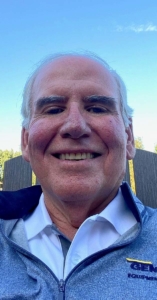A Pathway to Purpose Through Learning
We are all consumed with plans and budgets and objectives. We do them predictably and rigorously at least once a year. Most of us have mission statements and vision statements posted on boards throughout the company. Yet I wonder how many of us have a purpose. Not only that, how many of us know how to find our purpose? I submit that you can find a pathway to your purpose through learning.
Let me start by explaining what I mean by a “sense of purpose.” A sense of purpose is the motivation that drives you toward a satisfying future. It also helps you get the most from the things that you do and achieve in the here and now. Alright that is reasonably clear but how to I get a sense of purpose? That is a problem. Only around 25% of American adults cite having a clear sense of purpose about what makes their lives meaningful, according to one analysis of the subject in the New York Times while 40% claim neutrality on the subject or say they don’t. A study in 2010 by Applied Psychology found that individuals with high levels of eudemonic well-being – which involves having a sense of purpose along with a sense of control and feeling like what you do is worthwhile – tend to live longer. A 2016 study in the Journal of Research and Personality found that individuals who feel a sense of purpose make more money than individuals who feel that their work lacks meaning. These studies and findings tell us you don’t have to worry about making money or being happy, just find your own sense of purpose and pursue it.
What is your purpose in life is a different kind of question isn’t it? It isn’t what do you do or how do you do it or even why you do it. It is what is your purpose. Now that is a real poser. How many of you ask your team members what they believe their purpose is in life? I don’t imagine any of you do. That is much too much of an invasion of what we determine is our “private” space. How are we supposed to know if any of our team are fulfilled in their job or is it “just” a job?
That has been on my mind recently as we slowly come out of the funk that this pandemic has put us in. I have written in the past that we need to push forward. We need to show resilience and strength and continue to serve our customer needs. After all they all struggled to make a living and make ends meet themselves. We need to be strong and present for them.
Recently I read a document about learning from Kinsey Consulting that got my attention. Unilever was the subject of the article and it dealt with creating “an engine of success which is fueled by continual learning.” They are trying to create an atmosphere “where purpose and skill travel the same path.” The consumer goods giant believes that the engine of success is fueled by continual learning. Part of reimagining organizations is the ability to create an atmosphere where purpose and skill travel on the same path.
At Unilever, that’s being accomplished through the company’s Future Fit initiative launched earlier this year, says Leena Nair, Unilever CHRO (Chief Human Resources Officer). Every person in the company has this plan, which contains four elements, she says. Employees start by identifying their purpose. “We feel that people learn best in areas that they feel purposeful about,” Nair says.
From there, the plan addresses employees’ energy level and overall well-being, and how they can improve both; leadership training and areas of development; and, lastly, actual skills. Nair says Unilever has created a learning pathway for all positions within the company. “We think our approach is unique and well suited for the environment we’re in,” she says. “There’s too much noise right now about what to learn; there’s too much coming at employees.” Being actively involved in the process allows employees to take ownership of their career. “It’s not something being done to them,” she adds. “It’s them embracing the change they need, and the company needs, to move through and past this pandemic.”
This is the direct purpose of our job function skills assessments. Although there are many paths for business to follow there is no one path that is perfect for everyone. It seems to be quite clear, however, that there is a need for a clear purpose, a strategy that everyone is aware of and a strong emphasis on learning. That is what we are aiming to do at Learning Without Scars. Our purpose is to help employees think about and understand their individual potential. Then to provide each employee the learning tools, the assessments and classes, that will help them work towards achieving that potential. It is not an easy road to pursue. It is a path that requires a lot of self-discipline and hard work. It is a path that we are on with each and every one of our employee and business clients. Our purpose is clear. Who wants to join with us on this journey?
The time is now.









